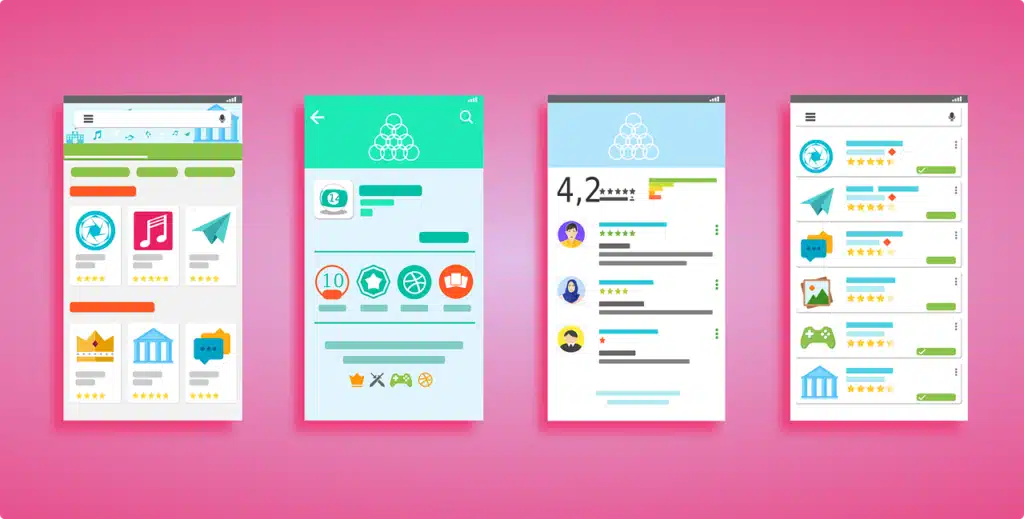Master UI ( User Interface) UX Design with this Udemy Course
Mastering the Fundamentals of User Interface Design
In the ever-evolving landscape of digital design, User Interface ( UI ) plays a pivotal role in shaping user experiences. Whether you’re a budding UI designer or an entrepreneur looking to enhance your digital products, understanding the fundamentals of UI design is essential. This comprehensive course aims to equip beginners with the knowledge and skills needed to create visually appealing and user-friendly interfaces. Through a structured curriculum, we’ll explore key topics such as Typography, Color Theory, Design Principles, and the Basics of AdobeXD. By the end of this course, you’ll not only grasp these fundamental concepts but also apply them in a hands-on project a design agency website.

Section 1: Typography
Typography is the cornerstone of effective UI design, influencing readability, aesthetics, and overall user experience. In this section, we’ll delve into the following aspects:
Introduction to Typography (500 words):
- Understanding the role of typography in UI design.
- Exploring font families, styles, and weights.
- The impact of typography on user perception.
Choosing the Right Fonts (600 words):
- Pairing fonts harmoniously for a cohesive design.
- Exploring font combinations and contrasts.
- Practical tips for selecting fonts that align with the project’s goals.
Hierarchy and Readability (700 words):
- Establishing visual hierarchy through font size and weight.
- Enhancing readability with proper line spacing and letter spacing.
- Techniques for creating engaging and scannable text.
Assignments and Rules of Thumb (300 words):
- Hands-on assignments to reinforce typography concepts.
- Essential rules of thumb for effective typography in UI design.
Section 2: Color Theory
Color is a powerful design element that can evoke emotions, convey information, and create visual interest. This section will cover:
Understanding Color Theory (500 words):
- Exploring the color wheel and its significance.
- The psychological impact of different colors.
- Choosing colors that align with the brand and target audience.
Creating Color Schemes (600 words):
- Comprehending monochromatic, analogous, complementary, and triadic color schemes.
- Practical examples of effective color combinations.
- Tools for generating and exploring color palettes.
Applying Color in UI Design (700 words):
- Using color to guide user attention and interaction.
- Accessibility considerations in color choices.
- The role of color in establishing brand identity.
Assignments and Rules of Thumb (300 words):
- Hands-on color exercises to reinforce learning.
- Key rules for using color effectively in UI design.
Section 3: Design Principles
Understanding design principles is crucial for creating visually cohesive and user-friendly interfaces. This section covers:
Introduction to Design Principles (500 words):
- Exploring principles such as balance, contrast, alignment, and repetition.
- How design principles contribute to a unified and professional look.
- Real-world examples of well-designed interfaces.
Applying Design Principles in UI (600 words):
- Balancing visual elements for a harmonious layout.
- Utilizing contrast for emphasis and visual interest.
- Ensuring proper alignment and consistency across the interface.
Space and Proximity (700 words):
- Understanding the importance of white space.
- Proximity as a tool for grouping related elements.
- Techniques for creating visually organized interfaces.
Assignments and Rules of Thumb (300 words):
- Hands-on design projects to implement design principles.
- Essential rules to guide the application of design principles in UI.
Section 4: Basics of AdobeXD
AdobeXD is a powerful tool for UI/UX design, and this section will introduce beginners to its essential features:
Getting Started with AdobeXD (500 words):
- Navigating the AdobeXD interface.
- Understanding artboards and their significance.
- Overview of key tools and functionalities.
Designing in AdobeXD (600 words):
- Creating shapes, text, and images within AdobeXD.
- Using layers and managing design elements.
- Prototyping and previewing designs for user interactions.
Collaboration and Sharing (700 words):
- Collaborating with team members using AdobeXD.
- Exporting designs for development.
- Showcasing designs and receiving feedback.
Hands-On Practice Project: Design Agency Website (800 words):
- Applying typography, color theory, and design principles to create a design agency website.
- Step-by-step guidance on translating concepts into a real-world project.
- Tips for refining and enhancing the final design.
Virtualization 90 Minute Demonstration Crash Free udemy Cour
the secrets of virtualization in just 90 minutes with comprehensive course! practical skills real-world applications for VMware vSphere, Microsoft Hyper-V, AWS.
Conclusion:
This comprehensive UI design course is tailored for beginners and entrepreneurs seeking to establish a strong foundation in UI design. By mastering the fundamentals of Typography, Color Theory, Design Principles, and the Basics of AdobeXD, participants will gain the knowledge and skills necessary to create visually stunning and user-centric interfaces. The hands-on practice project a design agency website provides a practical application of the learned concepts, ensuring that participants not only understand the theory but can also implement it in real-world scenarios. After completing this course, you’ll emerge with the confidence and competence to embark on your journey as a UI designer or entrepreneur creating compelling digital products.





